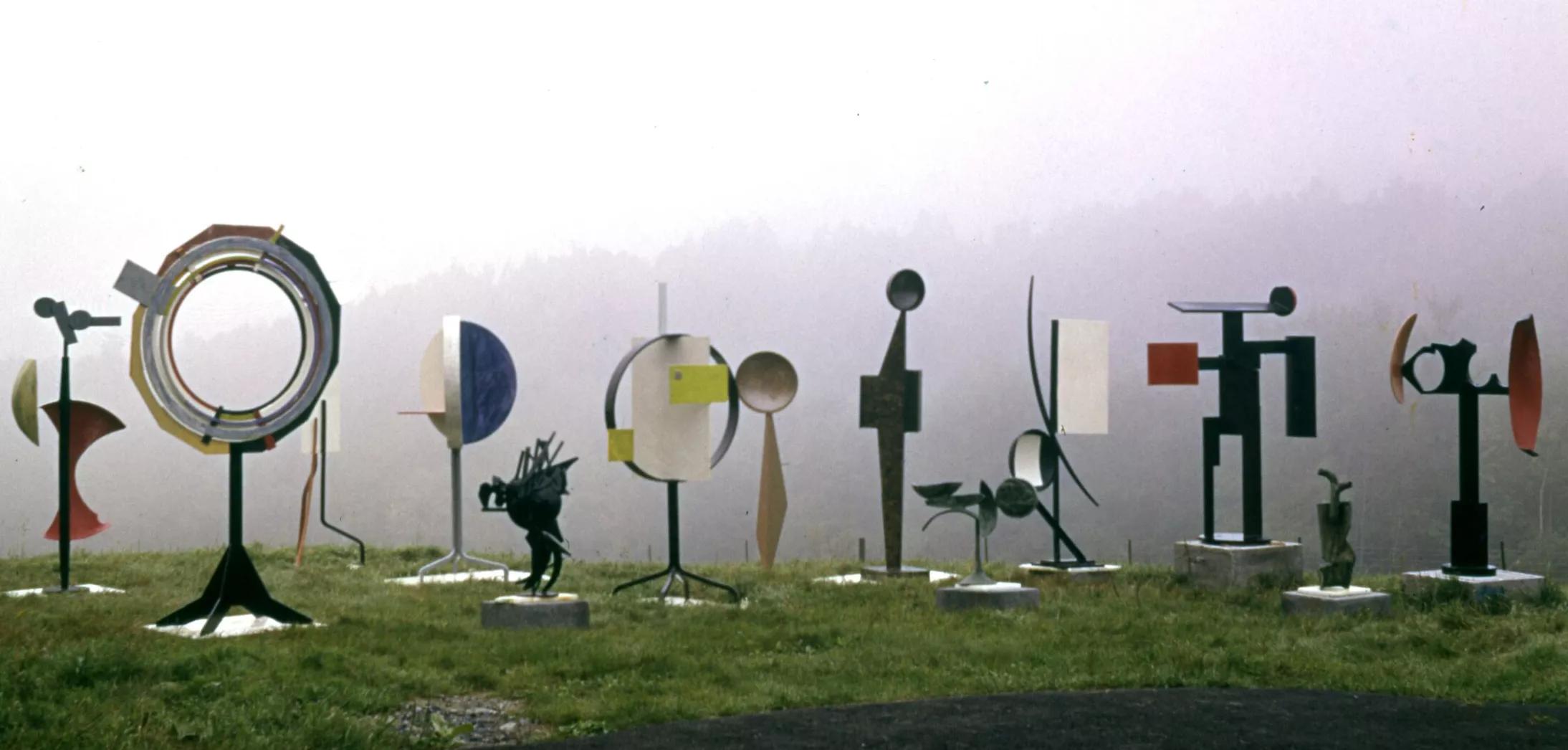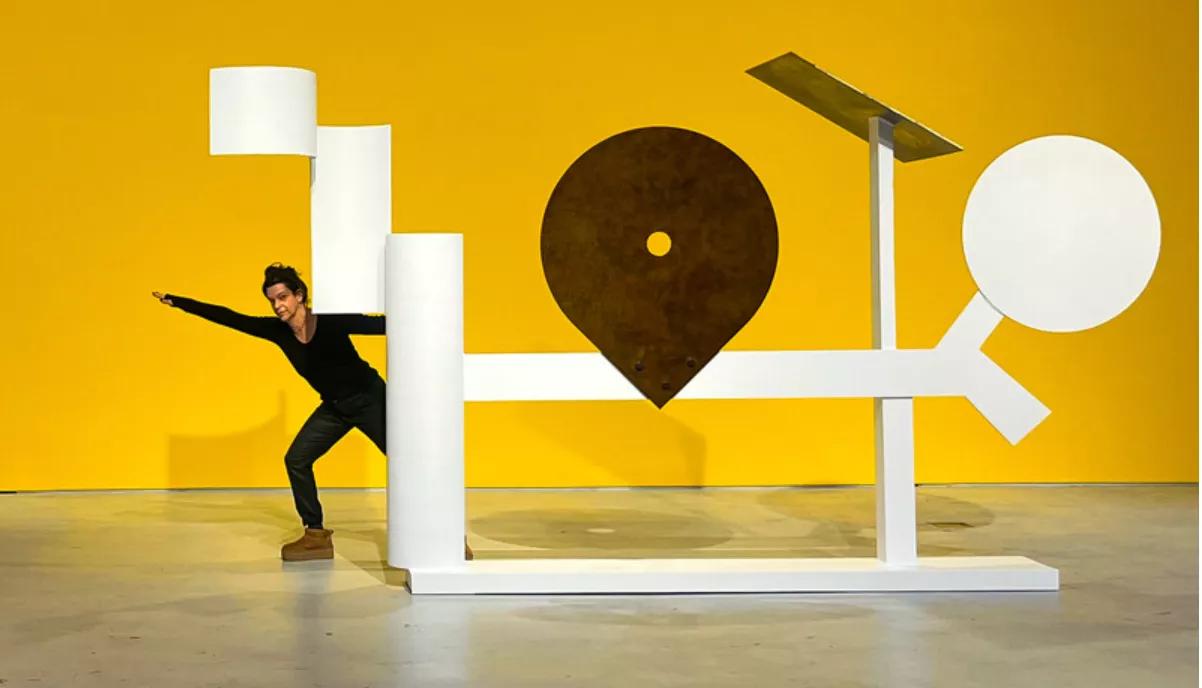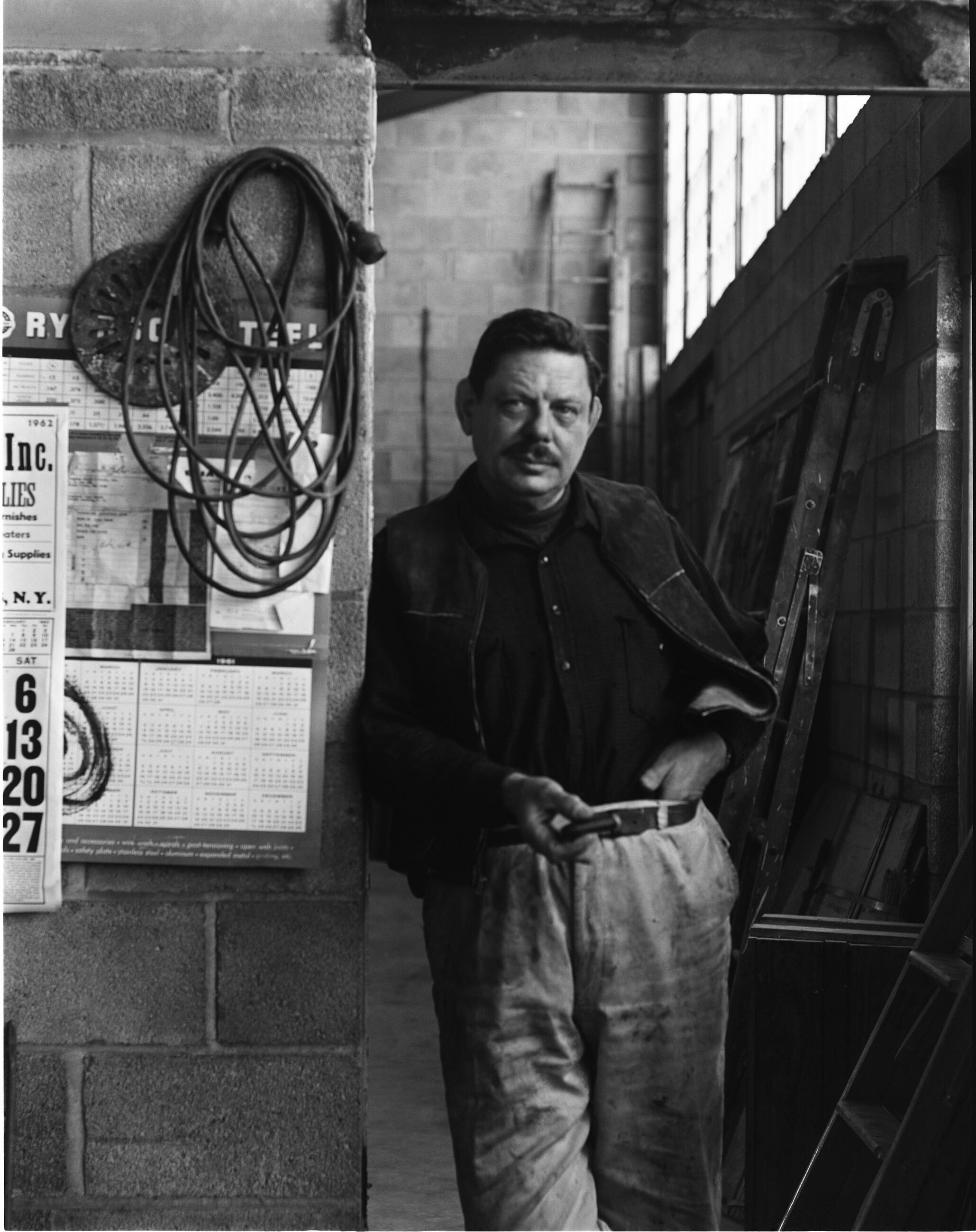
No One Thing
David Smith, Late Sculptures
1 February – 13 April 2024
New York, 22nd Street
‘David Smith’s sculptures are—big or small, figurative or abstract—very complete, very attentive to your presence. They’re generous; they have no boring views. Circle them as you may, they are never napping. They present a total attention, and they are telling you that that is the way to be: on guard.’
— Frank O’Hara, 1964
Explore the exhibition
One of the most influential and innovative artists of the 20th Century, and the sculptor most closely associated with the abstract expressionist movement, David Smith (1906–1965) was at his most experimental and prolific in the last five years of his life. During this period, he created approximately a third of his sculptural oeuvre. He deployed welding to newly monumental ends, integrated open space into his arrangement of planar forms and animated sculptural surfaces with paint in color combinations that transcended logic—all innovations that transgressed the norm, solidified his legacy and impacted generations of artists to come. In their sheer variety, Smith’s late works are nevertheless united by a single shared characteristic: blazing, liberated inventiveness.
While Smith often grouped objects together with series titles, he worked on multiple series simultaneously and understood each sculpture as it ‘related to my past works, the three or four works in process and the work yet to come.’ He also cited the importance of painting in his practice, noting that not only is the history of sculpture painted, but for Smith each planar surface had its ‘own properties in form as well as in color, and then color adds another challenge.’ The seven painted sculptures in ‘No One Thing’ are exemplary of his refusal to adhere to one way of making or a single style. Drawn from signature series such as the Zigs, Primo Pianos and Gondolas, as well as important sculptures that were not serially designated, including ‘Circles Intercepted’ (1961), ‘Ninety Son’ (1961), ‘Rebecca Circle’ (1961) and ‘Untitled’ (1963), the works on view evidence the artist’s sustained conversation with materiality, form and surface.

Hauser & Wirth will celebrate the enduring dynamism of the works on view with a series of walkthroughs and performances by artists from across disciplines, highlighting the sweep of Smith’s impact on future generations and reflecting the kind of intensive dialogue he often undertook with other artists, colleagues and students throughout his career. Moreover, the exhibition, flooded with constantly changing natural light in the gallery’s soaring fifth floor space, is presented in a way that evokes Smith’s own perspective of these works as they once were arranged in his fields at Bolton Landing. In 1956 Smith told a group of young artists, ‘I’ve been more concerned with questions than I have with answers.’ This reflection indicates Smith’s notion of his sculpture-making as an exploratory and ever-evolving practice, and invites viewers to locate connective yet open-ended threads among seemingly eclectic works.
Primo Piano II
1962
Steel, bronze, stainless steel, paint
225.1 x 408.3 x 79.4 cm / 88 5/8 x 160 3/4 x 31 1/4 in
© 2024 The Estate of David Smith / Licensed by VAGA at Artists Rights Society (ARS), NY
Photo: Ron Amstutz
Gondola II
1964
Steel, paint
278.8 x 274.3 x 45.7 / 109 3/4 x 108 x 18
© 2024 The Estate of David Smith / Licensed by VAGA at Artists Rights Society (ARS), NY
Ninety Son
1961
Steel, paint
188 x 50.8 x 33 cm / 74 x 20 x 13 in
© 2024 The Estate of David Smith / Licensed by VAGA at Artists Rights Society (ARS), NY

In Response: Choreographer Pam Tanowitz on ‘No One Thing. David Smith, Late Sculptures’
On the occasion of the exhibition 'No One Thing. David Smith, Late Sculptures’, and paying homage to David Smith’s interest in music and dance, please join us for a performance in response to the works on view with choreographer Pam Tanowitz, and dancers Marc Crousillat, Victor Lozano, and Maile Okamura.
This event is free. However, due to limited space, reservations are required.
Photo of Pam Tanowitz with Primo Piano II (1962) in ‘No One Thing. David Smith, Late Sculptures’

On View at New York, 22nd Street
‘No One Thing. David Smith, Late Sculptures’ is on view until 13 April
About the Artist

David Smith
Current Exhibitions
1 / 12





















